|
John Tyman's Cultures in Context Series AFRICAN HABITATS : FOREST, GRASSLAND AND SLUM Studies of the Maasai, the Luhya, and Nairobi's Urban Fringe |
|
|
|
Markets : 177-198 | Pottery : 199-206 |
|
John Tyman's Cultures in Context Series AFRICAN HABITATS : FOREST, GRASSLAND AND SLUM Studies of the Maasai, the Luhya, and Nairobi's Urban Fringe |
|
|
|
Markets : 177-198 | Pottery : 199-206 |
Click for full-screen images
Markets : 177-198
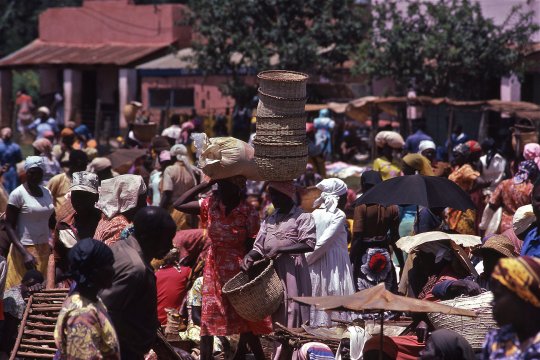 |
| 178. With few exceptions, both the buyers and the sellers are women. They bring in the produce, market it, and carry home what they have failed to sell and/or have purchased. |
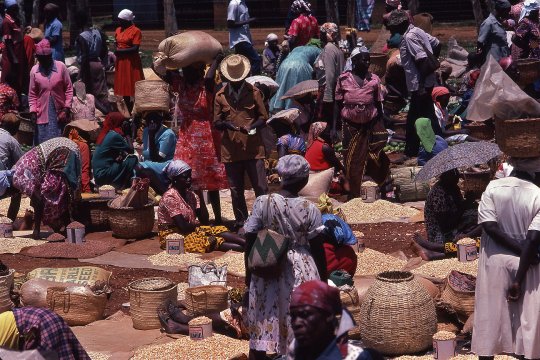 |
| 179. Those who have failed to grow enough corn to feed their family can buy more here. The market at Kakamega is like an open-air supermarket with each section occupied by a particular product. |
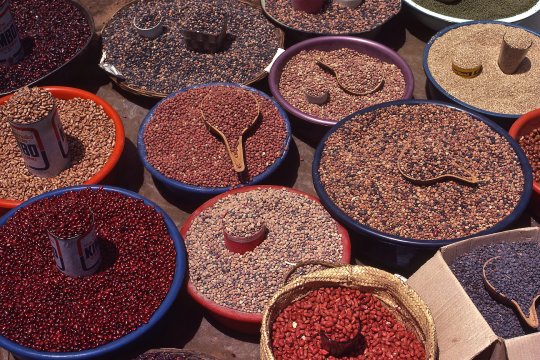 |
| 180. There are a range of beans and peas on offer too. |
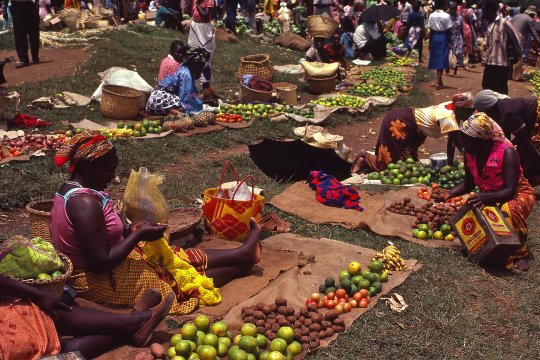 |
| 181. Another aisle was stocked with a variety of vegetables and fruits ... |
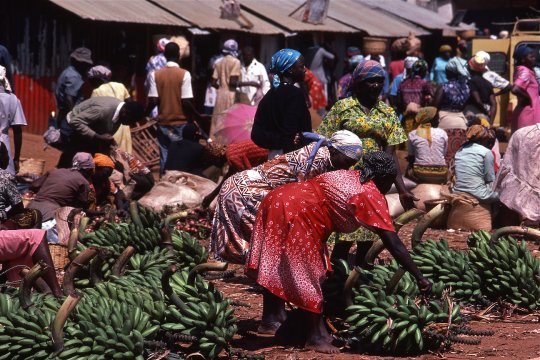 |
| 182. And there was a special section reserved for bananas. |
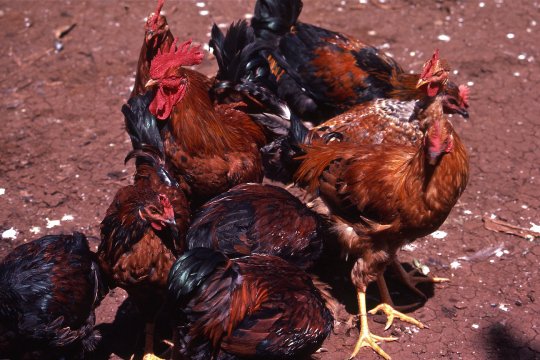 |
| 183. The livestock offering was usually dominated by chickens. |
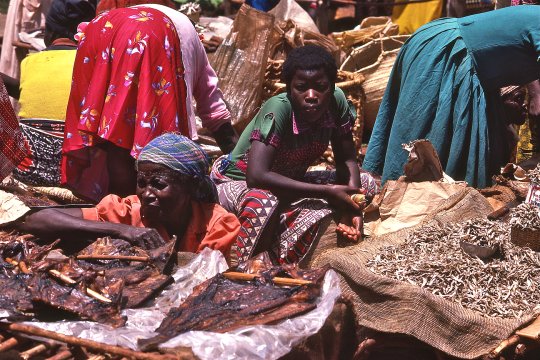 |
| 184. But at the Luanda market there was a range of fish to choose from. Some of it was fresh, but in the absence of refrigeration most of it was dried. |
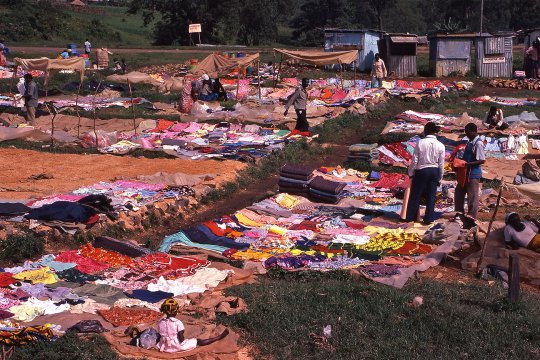 |
| 185. A large area was devoted to clothing, of course. |
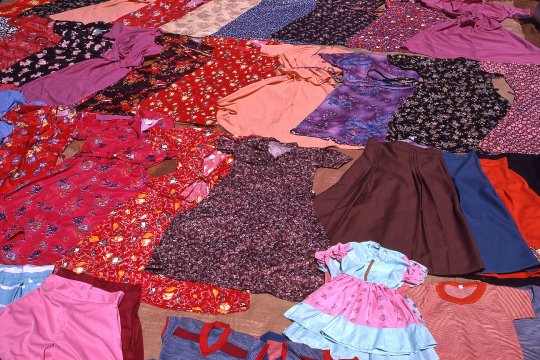 |
| 186. Most of it was secondhand but some of the dresses were new. |
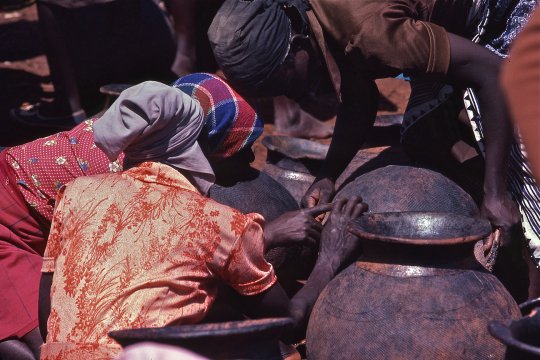 |
| 187. People buying pots wisely gave them a tap to see if they sounded right, but there were “seconds” available for those who could not afford quality. |
 |
| 188. The baskets on offer are for carrying corn -- as flour in those that have been smeared with cow dung to close the gaps. |
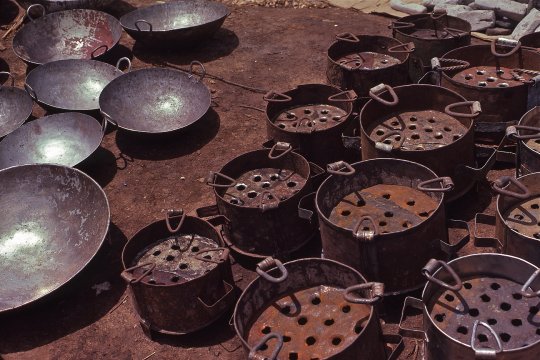 |
| 189. The metalwork available included jikos (stoves burning charcoal) and woks, |
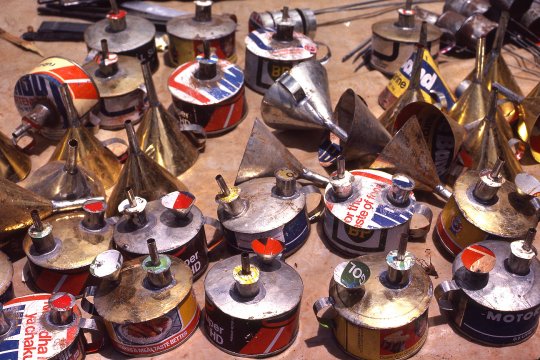 |
| 190. Also oil lamps, and funnels to fill them ... both made from recycled tin cans. Paraffin and charcoal can be bought here also. |
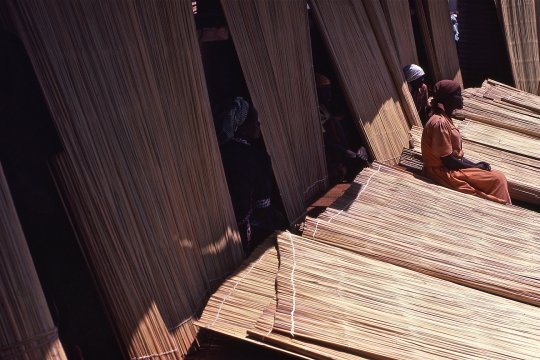 |
| 191. There were a variety of building products on offer including, besides these woven mats and screens, a variety of doors, sawn timber, bricks and even window frames. |
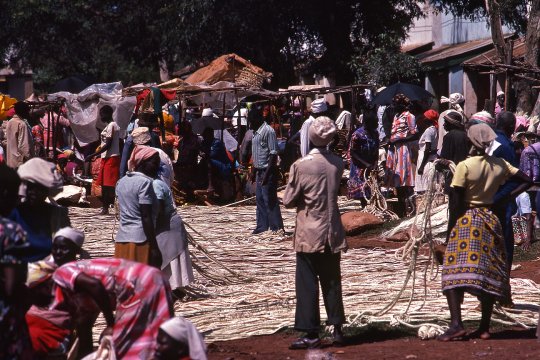 |
| 192. There were ropes made from sisal. |
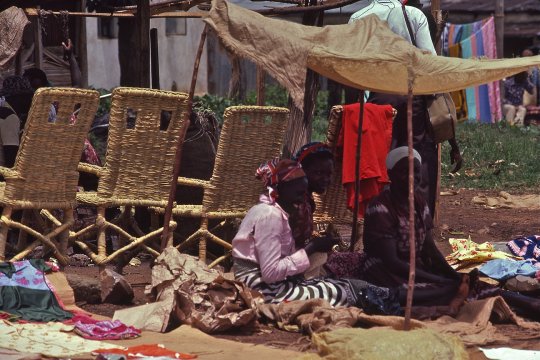 |
| 193. And items of furniture, also made locally. |
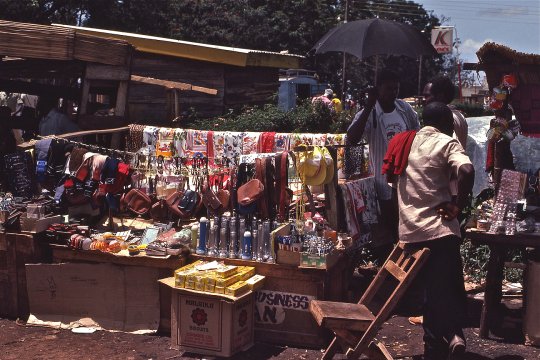 |
| 194. A few men had imported bazaar goods for sale, and others garden hoes. |
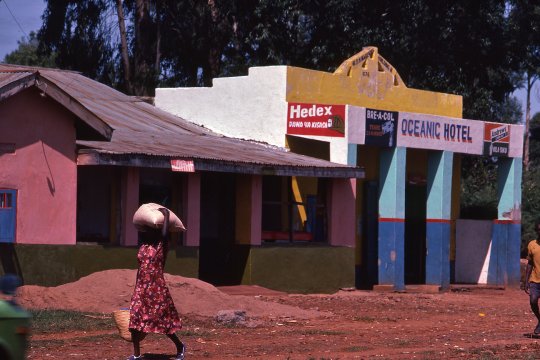 |
| 195. In addition to market places, many communities have small shopping centres, open all week long. |
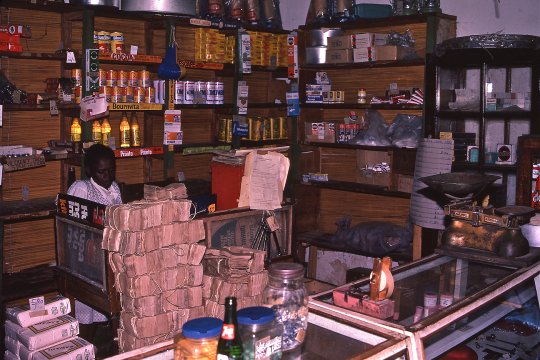 |
| 196. Here stores sell the variety of tinned foods, soft drinks, cooking oil, and toiletries found in corner stores worldwide. |
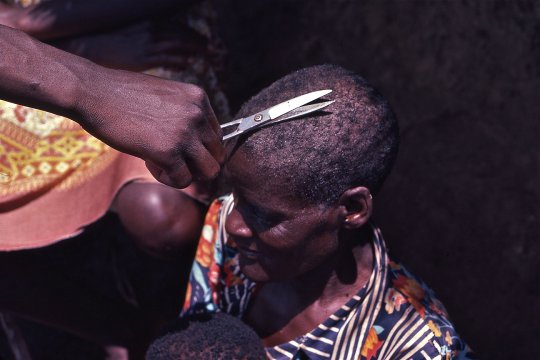 |
| 197. Some centres will have roadside barbers also, usually in the shade of a tree. |
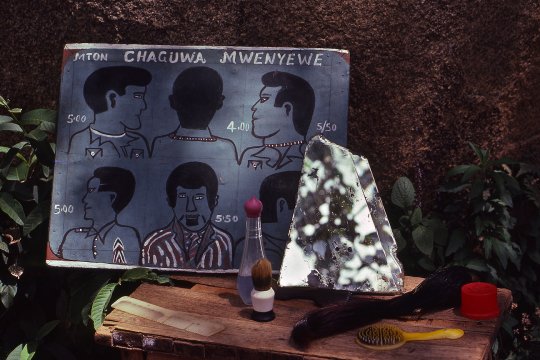 |
| 198. Customers can choose the style they require, at the price specified, and later use the mirror to see if they’ve been given what they wanted. |
Pottery : 199-206
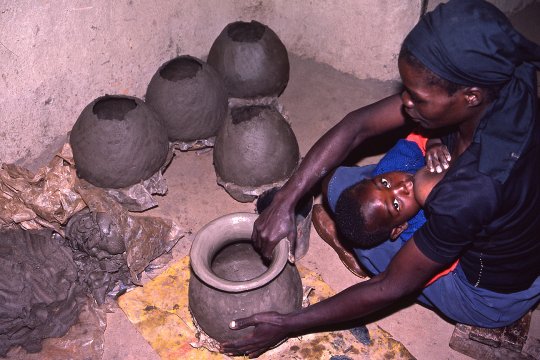 |
| 200. Women make a variety of pots for domestic use. The body of the pot is made first and left to dry for a few hours before the neck and the mouth are added. |
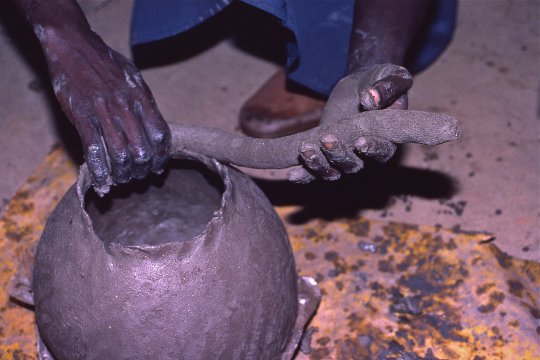 |
| 201. Most women work without wheels, using “coils” to build up the sides of each pot. |
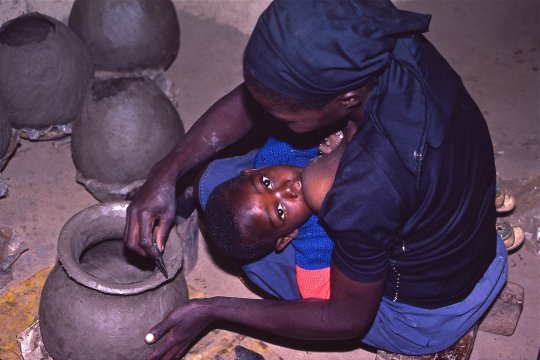 |
| 202. The sides of the pot, inside and out, are smoothed using a curved scraper (typically half a seed pod). |
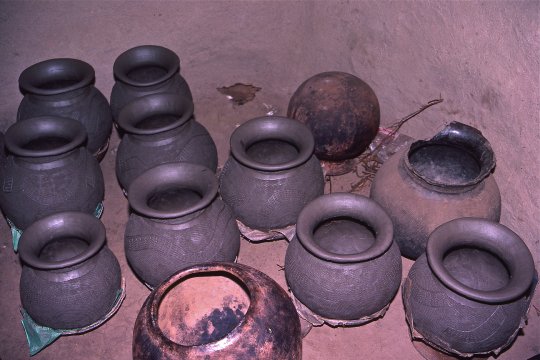 |
| 204. Her pots are left to dry in a storeroom for 5 or 6 days before they are fired. |
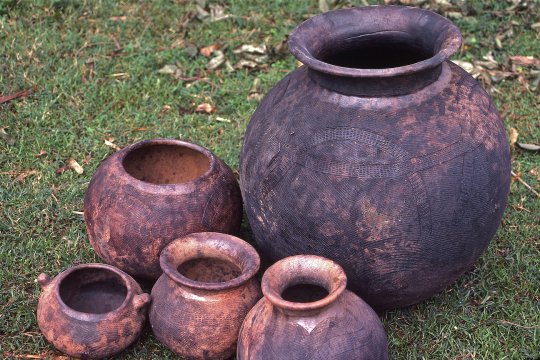 |
| 205. She makes five different pots for different purposes. In order of increasing size they are for cooking fish, cooking vegetables, cooking ugali, carrying water , and storing grain etc. |
![]()
Text, photos and recordings
by John Tyman
Intended for Educational Use
Only.
Contact Dr. John Tyman at johntyman2@gmail.com
for more information regarding
licensing.
![]()
www.hillmanweb.com
Photo processing, Web page layout,
formatting and hosting by
William
Hillman ~ Brandon, Manitoba ~ Canada